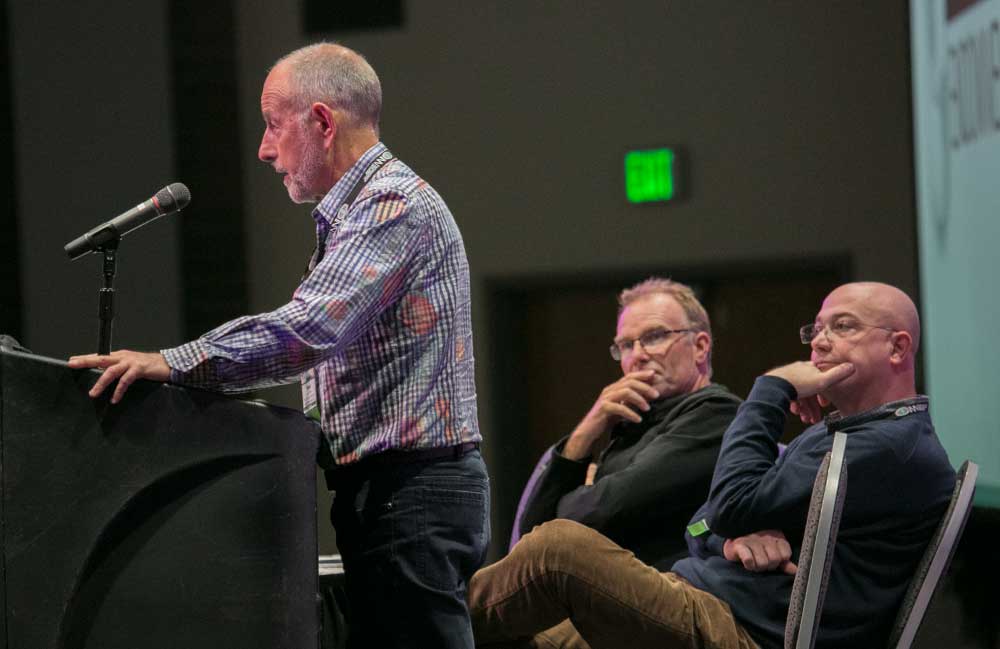
Stuart Tustin, left, Craig Hornblow and Stefano Musacchi during their day two panel covering tree architecture on February 21, 2017. (TJ Mullinax/Good Fruit Grower)
The second day of the International Fruit Tree Association’s 60 annual conference featured a slew of speakers on topics including rootstocks, tree architecture and orchard netting and the announcement of 2017 award winners.
Three awards were given at the banquet Tuesday evening:
• Jim Mattheis of the U.S. Department of Agriculture’s Agricultural Research Service in Wenatchee, Washington received the 2017 Outstanding Researcher Award. Mattheis specializes in postharvest physiology of apples, pears, and cherries and has been a leader in research into the use of SmartFresh (1-methylcyclopropene).
• Bruce Allen received the 2017 Grower of the Year Award. Allen owns Chiawana Orchard and the packing company Columbia Reach, both in Yakima, Washington, and also farms in New Zealand. “I hope you’re passionate about what you do and what you get to do,” Allen said.
• The 2017 Extension Award went to Tom Auvil, who has been involved with IFTA for 30 years as a teacher, tour guide and host, sharing information about horticultural practices. Auvil said he most appreciates coming to IFTA to listen to industry colleagues and hear their perspectives on industry challenges and issues.
Stuart Tustin of Plant and Food Research, New Zealand, shared information on new research trials into a two-dimensional planar cordon system intended to utilize a greater percentage of available light—85 percent or more.
Under the tree prototype, the planar canopy is divided into multiple, minimally-branched vertical fruiting stems.
“We need to try to reduce the capital outputs on the onset. We do want significant crops from young trees, and we want the trees to be much simpler to manage,” he said.
Today’s orchard systems need to be simple and attractive to work in, accessible and platform friendly, narrow, with 3-foot to 5-foot rows and 50 percent shade, and productive with targeted fruit.
“It’s about execution,” said Craig Hornblow of Ag First, New Zealand. “It’s doing the right job at the right time, consistently.’
Hornblow also shared information about drape netting, more commonly used in vineyards but which is being tried out in orchards in Australia and New Zealand.
“It’s really just about capital. We can do this with about half or a full structure,” he said. The challenge, he said, is maintaining horticultural excellence on a row that is under cover and harder to access.
Tustin and Hornblow were key speakers during the sessions, with Hornblow peppering his talk with photos and anecdotes from New Zealand in advance of next year’s IFTA joint summer study tour and annual conference scheduled for New Zealand in February 2018. Registration for the event opens March 20.






Leave A Comment